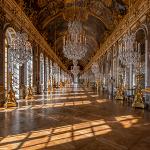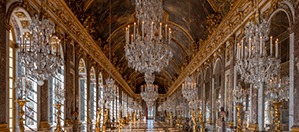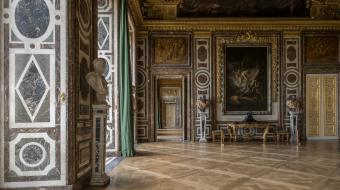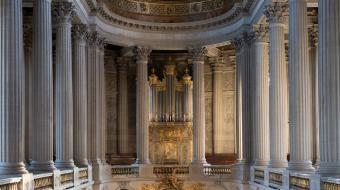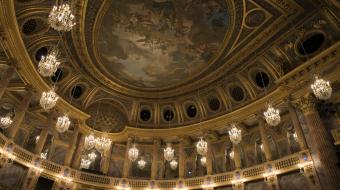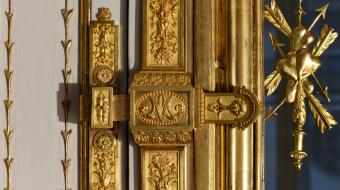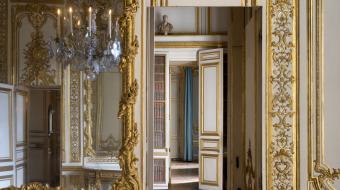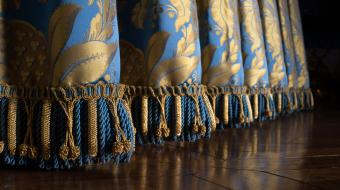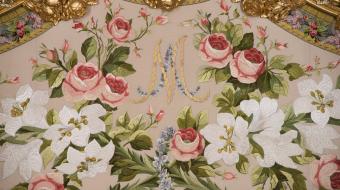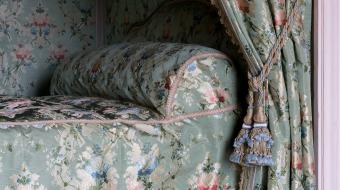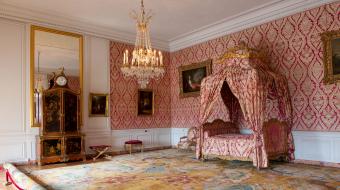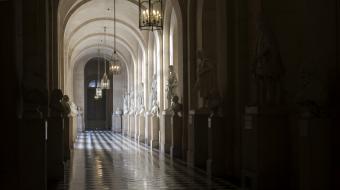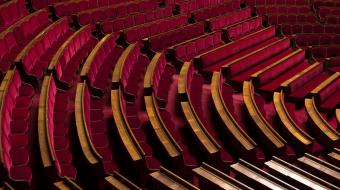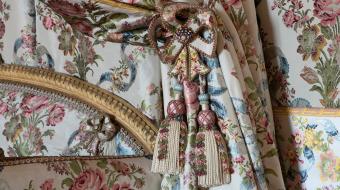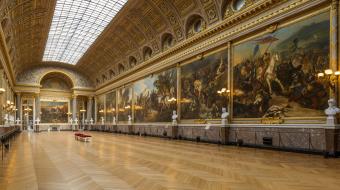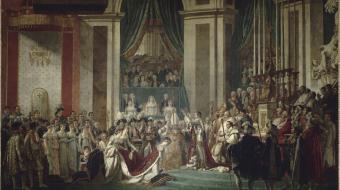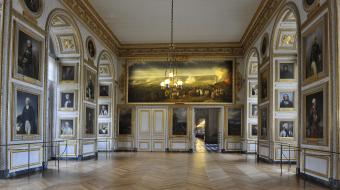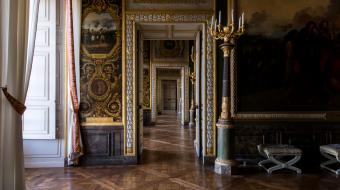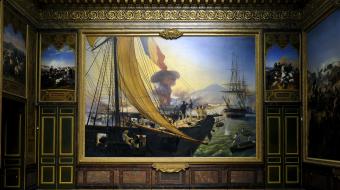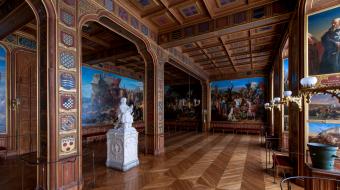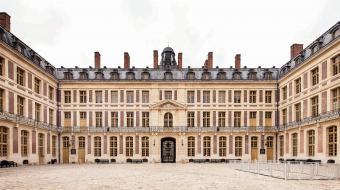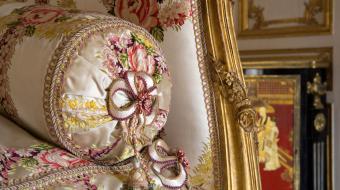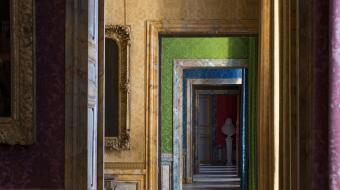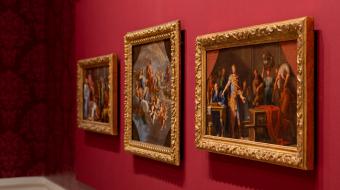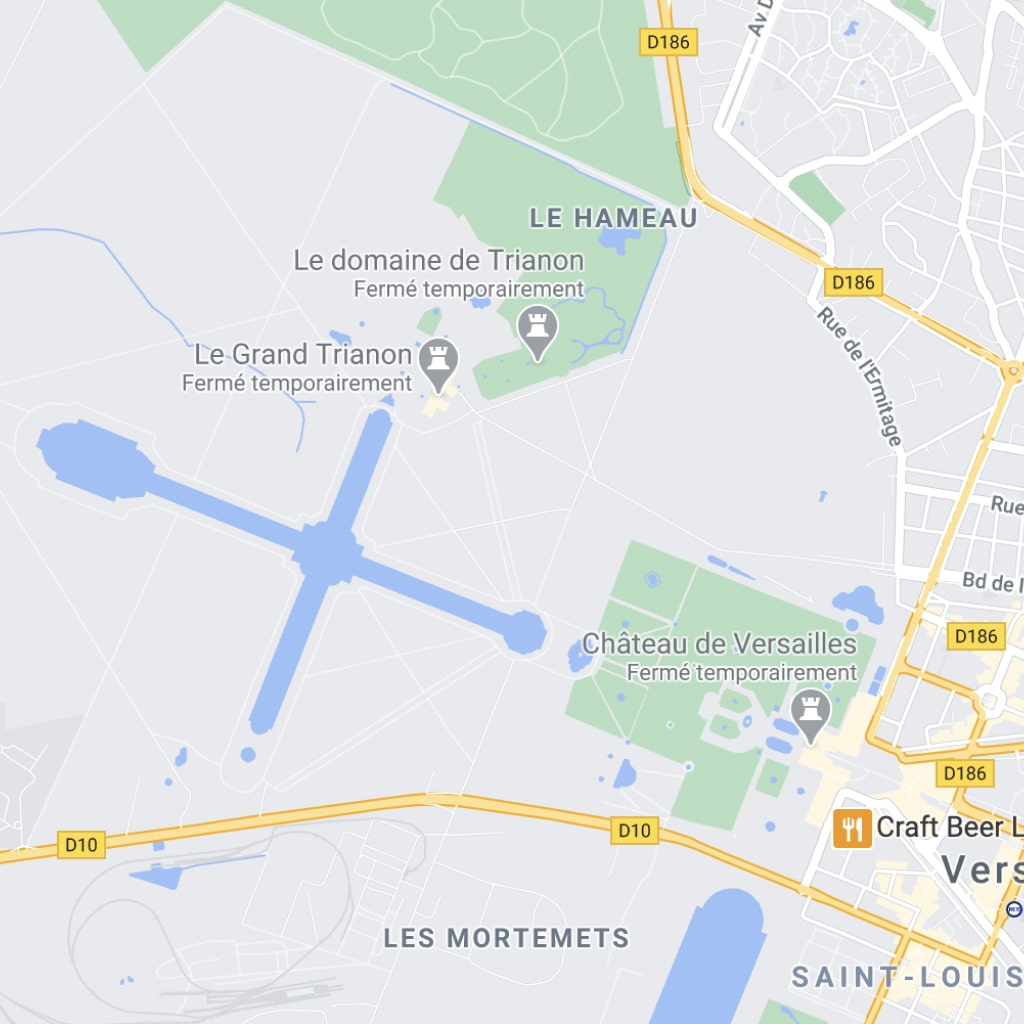News: A more authentic Hall of Mirrors
Recently, the Hall of Mirrors has been revealed in a light more faithful to that of the Ancien Régime. Although thousands of candles illuminated the glasswork during the rare grand balls held there, particularly for the weddings of the Dauphins, this ‘ballroom’ lighting was dismantled by the Menus Plaisirs immediately afterwards. The chandeliers are accessories and are not part of the gallery's décor. The decision in 1980 to permanently evoke the atmosphere of these grand celebrations was in response to a need to bring the château to life, but it contradicted the true, grandiose and solemn appearance of the Gallery as it was designed under Louis XIV.
Starting in the summer of 2025, as part of historic restoration work, some of the chandeliers will be removed in favour of more balanced lighting. This will mainly consist of the twenty-four torches that were also recreated in 1980, with their girandoles, and a few chandeliers that were preserved at certain times during the 18th century.
This lighting restores the gallery's subtlety and poetry of shadows and reflections, shaped by the 17 windows and 17 mirrored arcades. It also allows visitors to rediscover two great masterpieces: Jules Hardouin-Mansart's monument with its extraordinary proportions, and the ceiling painted by Charles Le Brun, now better lit, with its grand narrative of the exploits of Louis XIV.
The Hall of Mirrors
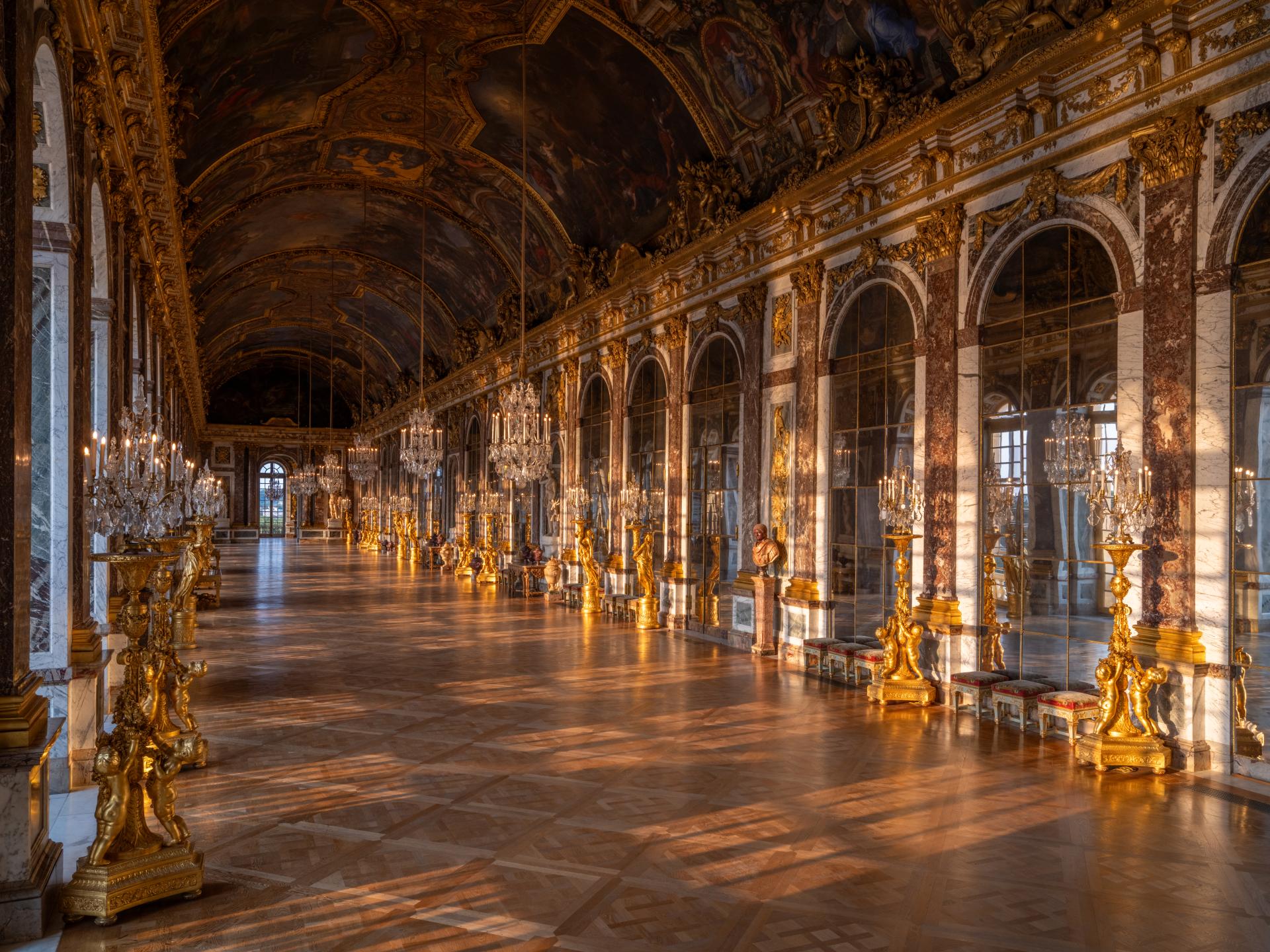
Following on from the victory over the three united powers, depicted in the War Room, the whole length of the Hall of Mirrors (73m) pays tribute to the political, economic and artistic success of France. Political successes are illustrated through the 30 painted compositions on the vaulted ceiling by Le Brun, which depict the glorious history of Louis XIV during the first 18 years of his reign, from 1661 to the peace treaties of Nijmegen. Military and diplomatic victories and reforms with a view to reorganising the kingdom are illustrated through allegories from Antiquity. Economic prosperity is revealed in the number and size of the 357 mirrors bedecking the 17 arches opposite the windows, demonstrating that the new French manufacture could rival the Venetian monopoly on mirror manufacturing. At the time such items were a great luxury. Artistic success is shown by the Rouge de Rance pilasters topped with capitals of gilded bronze based on a new design, which was referred to as “the French style” and was created by Le Brun upon the request of Colbert. The design incorporates the national emblems, with a fleur-de-lis topped by a royal sun between two Gallic roosters (the Latin word for rooster was gallus).
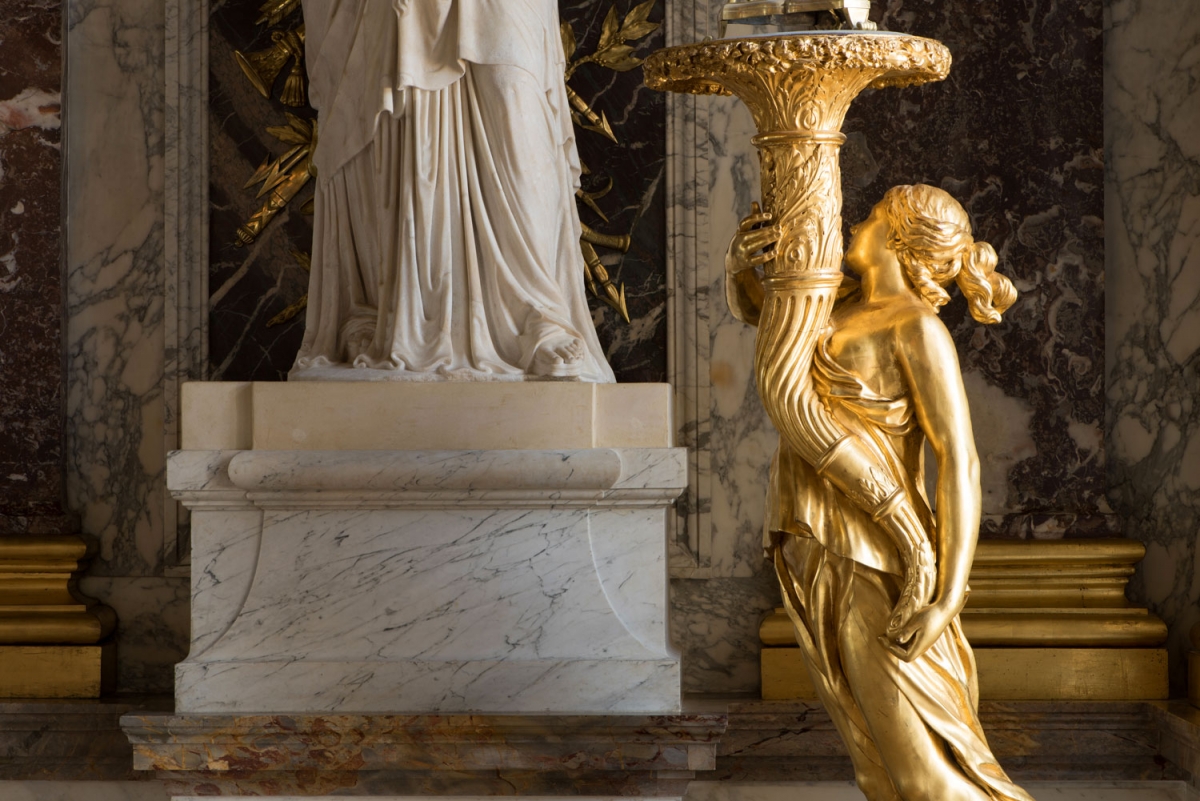
Courtiers and visitors crossed the Hall of Mirrors daily, and it also served as a place for waiting and meeting. It was used for ceremonies on rare occasions, for example when sovereigns wanted an extra dash of lavishness for entertainment (balls or games) held for royal weddings or diplomatic receptions. During the latter events, the throne was placed on a platform at the end of the hall near the Peace Room, whose arch was closed off. Rarely has the show of power reached such a level of ostentation. In 1685 the Doge of Genoa and the ambassadors of Siam (1686), Persia (1715) and the Ottoman Empire (1742) crossed the full length of the gallery, under the scutiny of the French Court seated to either side on tiered seating, before they reached the king.
It was also here that the Treaty of Versailles was signed on 28 June 1919, ending the First World War. Since then, presidents of the Republic have continued to receive official guests here.
The War Room
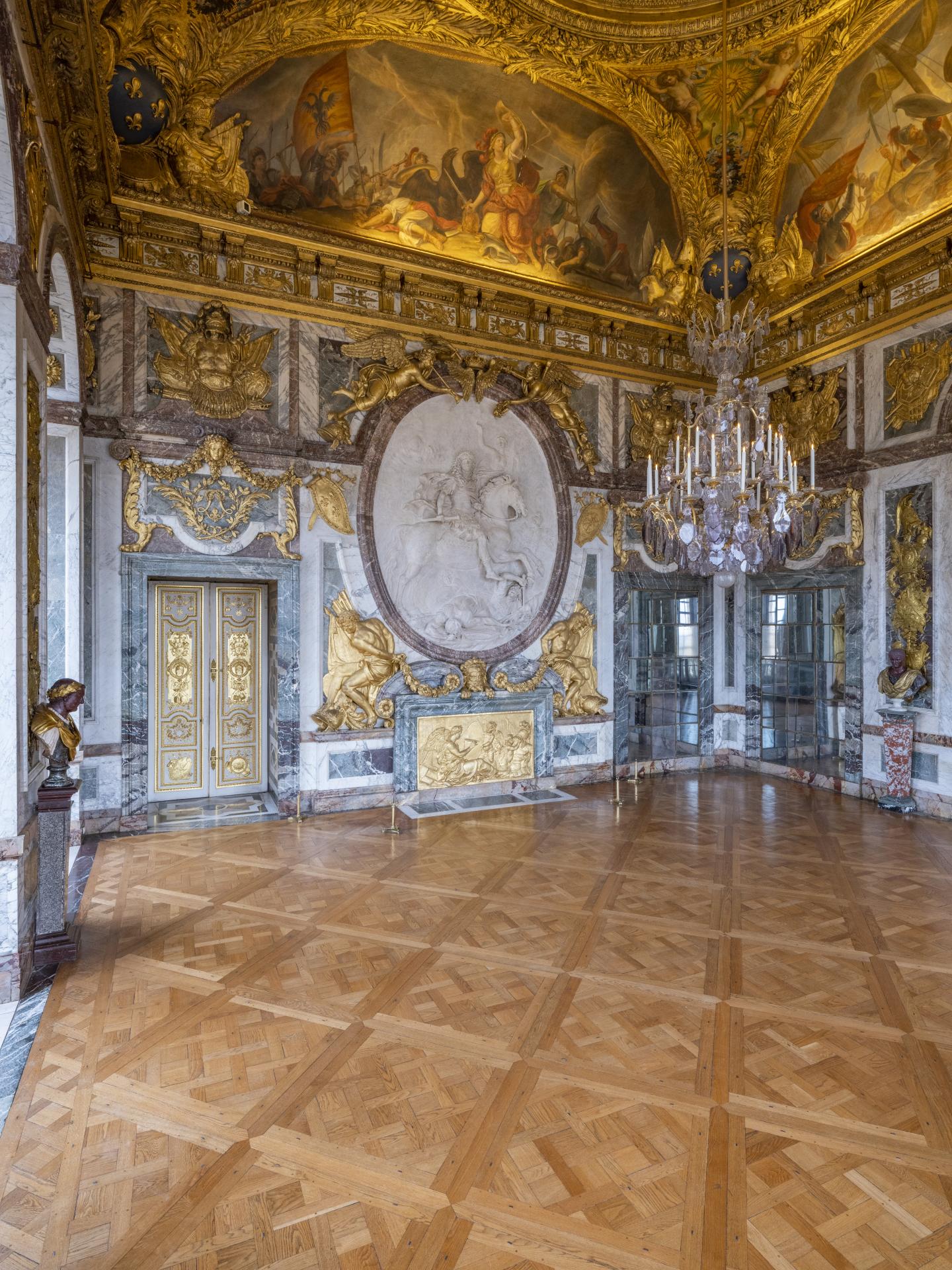
Hardouin Mansart started building the War Room in 1678. The decoration, completed by Le Brun in 1686, pays tribute to the military victories which led to the peace treaties of Nijmegen. The walls are covered with marble panels decorated with six trophies and weapons in gilded bronze. The wall adjacent to the Apollo Room bears an oval stucco bas-relief depicting Louis XIV on horseback trampling his enemies. At the top of this masterpiece by Coysevox are two sculptures of Pheme, and two captives in chains huddle beneath it. Below, in the bas-relief in the fake fireplace, Clio, the muse of history, is recording the king’s great deeds for posterity. In the centre of the cupola ceiling is a personified depiction of France, armed and sitting on a cloud and surrounded by Victories. Her shield is decorated with a portrait of Louis XIV. Her three defeated enemies are depicted in the arches: Germany kneeling down with an eagle; Spain making threats with a roaring lion; Holland overturned on another lion. The fourth arch depicts Bellona, the goddess of war, in a rage of fury between Rebellion and Contention.
The Peace Room
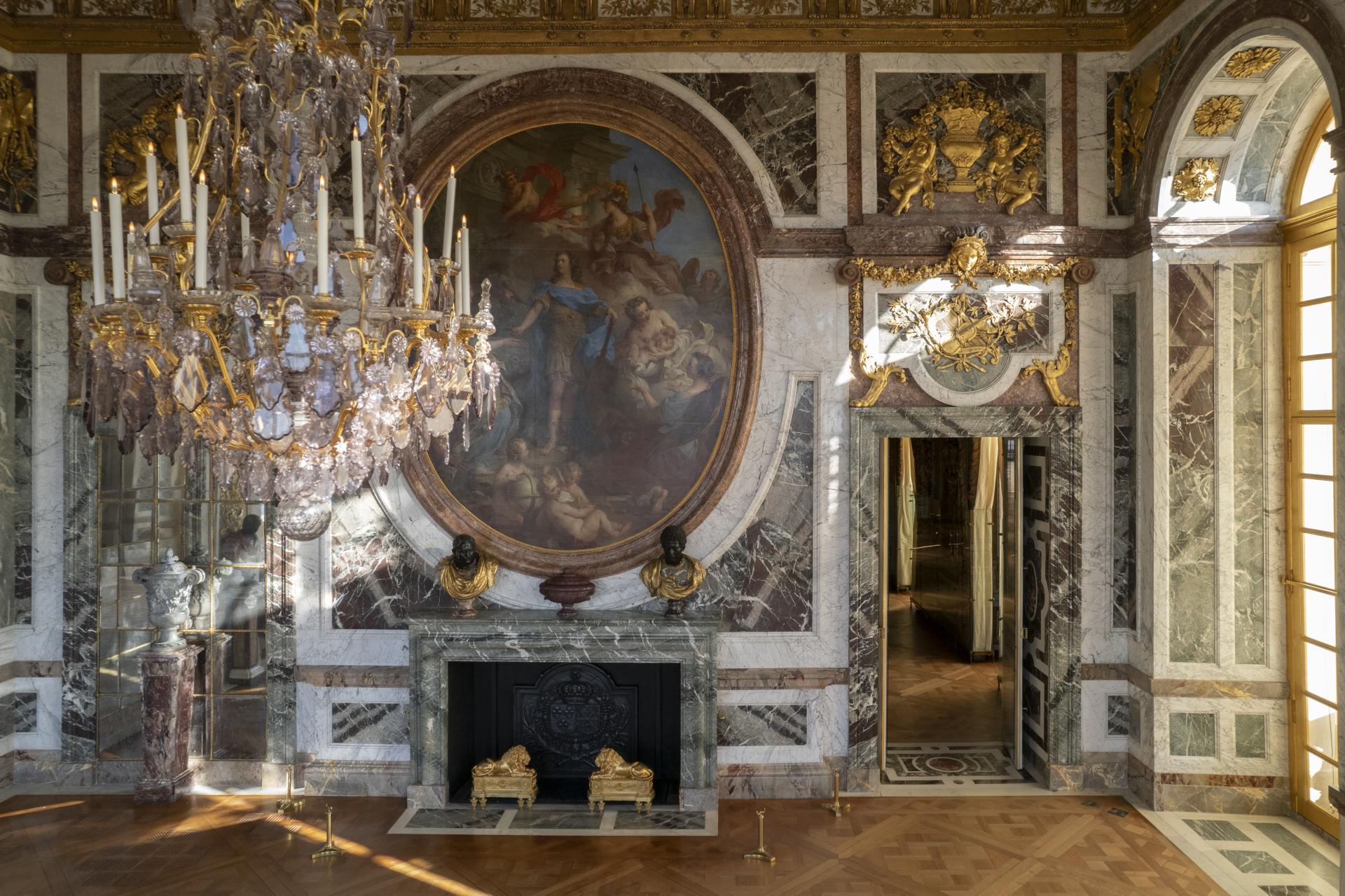
The Peace Room is symmetrical to the War Room and contains the same marble panel decoration and chased trophies of arms in gilded bronze. Here, however, Le Brun decorated the cupola and arches on the themes of the benefits of peace brought to Europe by France. From the beginning of Louis XIV’s reign this room was separated from the hall by a movable partition and was considered part of the Queen’s Apartment, constituting the final room after the Queen’s Chamber. During the reign of Louis XV, every Sunday Marie Leszczyńska gave concerts of religious or secular music, which played an important role in musical life in Versailles and which were continued by Marie-Antoinette during the subsequent reign. When required, the partition separating the room from the Hall of Mirrors was removed and the room formed part of the King's State Apartment.




